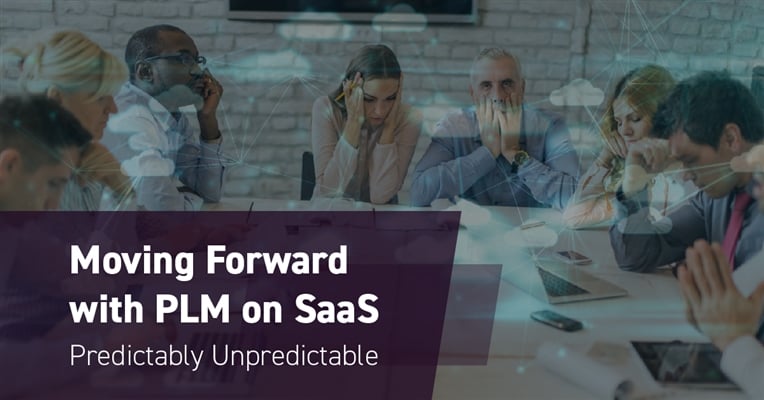By now, everyone is aware the cloud has become the dominant approach to deploying applications across almost every enterprise domain. Companies have progressed from viewing the cloud as an opportunity, to establishing it as their de-facto deployment strategy for now and the foreseeable future. To say the growth of the cloud has been substantial is an understatement. As IDC stated in their Worldwide Whole Cloud Forecast, 2020-2024: “By 2024, total worldwide spending on cloud services, the hardware and software components underpinning cloud services, and the professional and managed services opportunities around cloud services will surpass $1.0 trillion while sustaining a double-digit CAGR of 15.7%”. That’s trillion!
Creating Predictability
One of the reasons for continued growth is that companies see the appealing opportunity to reduce the unpredictability of managing their own data centers by moving the whole business function to an organization that has the resources to execute the complex tasks better than they can themselves. By contracting with a massive hyperscaler like Azure, AWS, or Google, to host a company’s technology, the complicated processes to fulfill the highest performance levels falls on the contracted company. Whether it is ensuring the right configuration of infrastructure, ensuring the necessary software versions are up-to-date, or recruiting highly trained resources to design and provide day-to-day operations, these companies have available capacity to ensure the predictability of their clients’ system environments. This predictability comes in many forms, such as predictable costs, reduced time for procurement, security compliance, guaranteed up-time, and guaranteed response times.
Predictability of a SaaS subscription goes beyond the infrastructure and continues into a company’s applications. There is a certain “confidence” created when organizations know their applications are upgraded on a regular basis, especially when the upgrade process has minimal impact on their organization. Since most SaaS software packages limit or even restrict company specific customizations for individual businesses, they are forced to standardize and align with their SaaS software processes. This ultimately reduces their application development work and minimizes issues with system bugs, future upgrades, and the technical debt that generally comes with customizing enterprise software.
The Problem with Predictability
The issue with creating such a predictable world is…well…the business world is not predictable. It never has been, and it never will be. Quite frankly, it is downright unpredictable. But you already knew that didn’t you? Unpredictability sneaks up on organizations with changing business requirements, company reorganizations and quickly adapting to new technology—all of which often plays havoc with a company’s applications, especially their PLM application.
If you have been keeping up with PLM cloud adoption, you have probably noticed something strange—companies have been late to the game. While other enterprise applications have adopted cloud solutions quickly, PLM, particularly for large companies has been lagging. Typical explanations for this include security worries and anxiety about vendor lock-in, but I believe there is a larger issue lurking underneath—managing unpredictability. Simply, I have never seen a large company use their PLM system out-of-the-box, regardless of their vendor. Every large company has unique requirements that require them to invest significantly in customizations of their PLM systems and leave them apprehensive about moving forward. This has left these companies with two difficult questions about moving to a PLM SaaS—how to migrate their current, on-premises PLM to a SaaS version and then what to do with their unique requirements when they get there. Predictably, unpredictable.
As many companies have found out when moving their PLM system to SaaS, their vendor’s SaaS offering may not have the same functionality as the on-premises version. They find that the SaaS version actually contains a subset of their existing system leaving IT departments to ask, “what am I supposed to do with the missing functionality”? Well, that was unpredictable.
The next roadblock companies face is what to do with their unique customizations that drive their company’s distinctive processes. Since many SaaS environments limit or restrict customizations, companies find themselves again asking how to meet their specific needs if they cannot keep their customizations. Without these customizations, organizations are left with burdensome and inefficient workarounds.
Of course, this issue does not end after the migration to a SaaS environment is complete. Since we live in an unpredictable world, there will predictably be many new and unexpected business needs. Ask yourself, have you ever seen an empty backlog? If you cannot bring your existing customizations with you, you certainly cannot guarantee that you will be able to meet your company’s new requirements in the future.
The Solution to Unpredictability
There is a PLM SaaS solution available to large companies that helps customers avoid the unpredictability trap. Aras Enterprise provides large companies the same fully customizable environment that enables companies to fulfill their most complex, unique requirements today. Enterprise SaaS delivers the same applications, platform services and low-code modeling engine that is used with an on-premises deployment. The SaaS environment encourages customizations and all customizations are guaranteed upgradable. Upgrades are performed by Aras and delivered to the customer on their schedule.
When customers subscribe to Aras Enterprise, the SaaS offering not only includes the resilient Aras Innovator platform, infrastructure on the Azure cloud, and managed services, but also the Aras DevOps. Aras DevOps is built from Aras’ own Continuous Integration/ Continuous Delivery (CI/CD) processes that have been used for years and provides customers with the software and processes necessary to manage the customers CI/CD pipeline. This includes the standard development environment and test automation tools. Aras not only supports unique customizations in their SaaS offering, but encourages it. With Aras, delivering this level of flexibility is actually predictable.
Learn more about Aras Enterprise SaaS.

